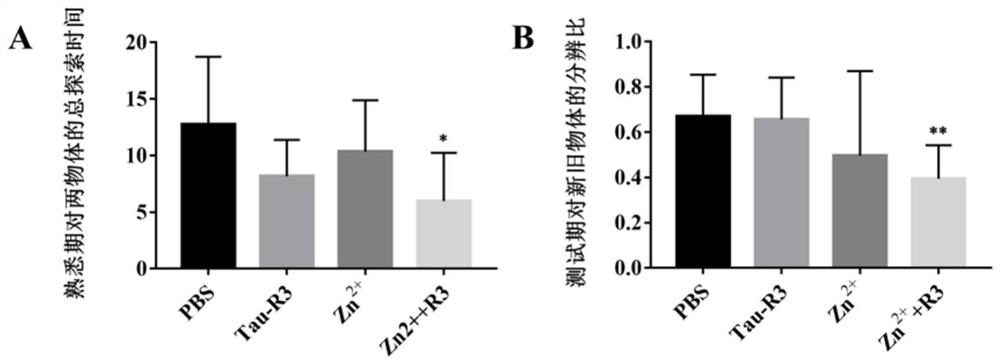A mouse model of Alzheimer's disease and its evaluation method
A technology of mouse model and evaluation method, which is applied in the fields of pharmaceutical formulation, compound screening/testing, animal husbandry, etc., and can solve problems such as expensive, time-consuming, non-homozygous, etc.
- Summary
- Abstract
- Description
- Claims
- Application Information
AI Technical Summary
Problems solved by technology
Method used
Image
Examples
Embodiment Construction
[0025] 1, the present invention is in vitro Zn 2+ Combined with tau-R3 and injected into the left cortex and right hippocampus of six-month-old C57 mice. After 45 days, a series of mouse behavior and biochemical indicators were detected.
[0026] 1.1. Open field test: the number of grids crossed, the number of times of standing and the number of defecation of mice in each group.
[0027] 1.2. Elevated plus maze experiment: the time when each group of mice entered the open (closed) arm for the first time, the total distance of entering the open (closed) arm, the time of staying in the open (closed) arm and the number of times of entering the open (closed) arm .
[0028] 1.3. New object recognition experiment: the total exploration time of each group of mice in the familiarization period and the discrimination ratio of old and new objects in the test period.
[0029] 1.4. Scenario fear test: the total freezing time of each group of mice in the association test, change associa...
PUM
 Login to View More
Login to View More Abstract
Description
Claims
Application Information
 Login to View More
Login to View More - R&D
- Intellectual Property
- Life Sciences
- Materials
- Tech Scout
- Unparalleled Data Quality
- Higher Quality Content
- 60% Fewer Hallucinations
Browse by: Latest US Patents, China's latest patents, Technical Efficacy Thesaurus, Application Domain, Technology Topic, Popular Technical Reports.
© 2025 PatSnap. All rights reserved.Legal|Privacy policy|Modern Slavery Act Transparency Statement|Sitemap|About US| Contact US: help@patsnap.com



